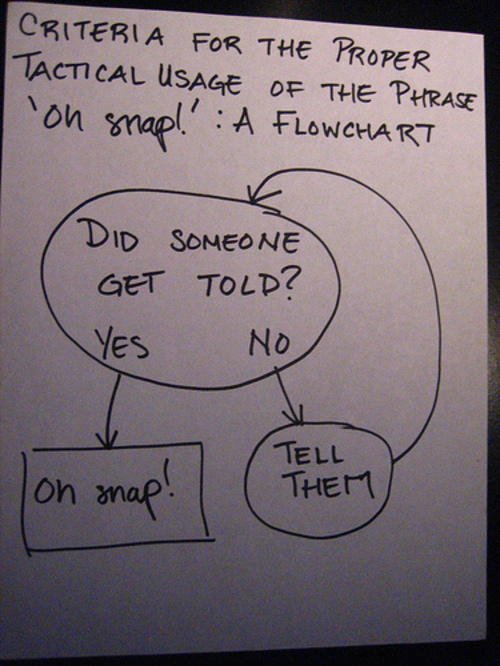How Writing Can Positively Affect Your Training Programs
In the past few months I’ve had the good fortune to be contacted by the odd publication looking for a writing assignment, in addition to regular contributions for sites like T-Nation and Bodybuilding.com. I’d like to think I’m a fairly good writer, even if I’m not banging out best sellers like Dan Brown or Stephen King, and I can usually figure out which verb to put with what noun, and use colons and semicolons in their (more often than not) correct place.
That being said, writing is still a pretty tricky venue, especially when an editor gives you an assignment with 10 or 15 major points they want covered, and they’re only giving you 500 words to do it. Essentially you have to write out something amazingly earth-shatteringly awesome, then go in with ruthless abandon and hack away at it with a machete known as “select-delete” until the word count is hit. This may mean cutting out a story of your grandma’s hip, revising the joke about a ditzy celebrity, ditching 3 of the 7 fart jokes or finding a new way to say 100 words in 5. What I mean to say is being excessively verbose as a writer is both a blessing and a curse. You can say a lot, but most people don’t want you to.
From there you have to hope the editors like it and don’t change too much. I’ve submitted work I’ve thought was brilliant, and when it was finally published the tone had changed and some sections were revised to have a different meaning than intended, and sometimes cutting entire sections for the sake of brevity. This isn’t to say it was a bad idea on the part of the editor, quite the contrary. Editors tend to know the audience their publications like and their tastes, so the revisions help a lot in speaking to the specific audience in question, and know how to get the best reaction for any given piece.
That said, sometimes I have to answer the unexpected consequences of an edit that goes unfavourably against what was originally intended and defend the post as published. There’s no writer in history who will get repeat business after saying something like “well, in the original edit I said ‘such and such’ but they changed it to this.” Throwing your boss under the bus is never a good idea.
So you’re probably asking, “How the hell is this something that correlates to program design?” I’m glad you asked such a handsome question!!
Imagine I were to design you the best program possible for whatever goal you had to do. The downside is you have 3 hours to work out each week over 3 sessions. Each session will have to involve some specific things: warm up and foam rolling (10 minutes each session); Strength and Power Training (30 minutes each session); and then metabolic conditioning, specifically for athletic performance in your chosen sport, predominantly anaerobic (20 minutes each session).
The most amazing workout in existence that I design for you encompasses all the latest technological advances in coaching, exercise selection, pairing of supersets, volume design, heart rate tracking as well as power output, and makes a room full of exercise physiology PhD’s salivate from it’s mere perfection.
The downside is each workout clocks in at around 3 hours. Cue the epic facepalming.
Sure, spending 40 minutes foam rolling every square inch of your fascia sounds like a good idea, but in reality it’s about as boring as having to watch Honey Boo Boo do her first grade reading comprehension homework. There’s some high points (spell “inbred”) but most of the time you just want to bang your head in a door way to get some feeling other than what ever the hell your IT band is deciding to do.
As a result, you have to cut back on a lot of things. This means the perfectly designed workout program now becomes a bit more Spartan: it still kicks you in the chest, but it does so in a much more rapid manner than before.
After taking the Atlas Shrugged length program and trimming it down to McArticle sized portions, you can now complete that bad boy in 2 hours.
BUT THERE’S NOTHING LEFT TO CUT!!!! THE GAINZ!!! WE’LL LOSE ALL THE GAAAAAIIIIINNNNNZZ!!!
Sorry dude, still gotta cut it down to fit.
After doing the allegorical equivalent of severing your right arm, you have a program that fits the time frame, but now it’s a shell of it’s former self. It’s a walking train wreck in reality. Chris Brown wouldn’t even hit that.
So what should be the best plan of attack for this workout? Essentially, hit the big rocks that take care of as many thing as possible at once and in as short of a time frame as possible.
Let’s say you needed to increase strength of glute medius, quads, hamstrings, low back, abs, shoulders, upper back, triplanar hip mobility, spinal stability, and get a metabolic effect. Instead of doing 10 different exercises to work on each specific muscle, heavy dumbbell goblet squats would do the trick in one shot.
[youtuber youtube=’http://www.youtube.com/watch?v=PKmrXTx6jZs&list=TLO8FyfpYS8sw’]
Immediately after this video, Ben proceeded to crush 7 banana splits and 6 t-bone steaks. Raw. Cooking isn’t bad ass.
So in reducing the total number of exercises into one condensed and complete Animality of an exercise, we covered all the bases and did so in a fraction of the time, and even probably got a better end result due to the metabolic stress and hormonal release from such stress, which means we’ve won the day.
This is the writers’ equivalent of condensing a statement such as
performing a triple extension based movement from the ankles, knees and hips provides a total systemic stress that is highly conducive for anabolism and hypertrophic adaptations in skeletal muscle.
….and turning it into a much less wordy but much more effective:
See how they’re kind of cogents now? Essentially, the best programs, much like the best articles, are the ones where you’ve cut out all the useless, repetitive and redundant stuff and left in only the big rocks that accomplish the most with the least amount of involvement. In training this is called the “Minimal Effective Dose,” where the desired results are produced with the least amount of involvement, not with the greatest amount of exercises and volume of training.
Keeping it simple is the best idea when it comes to most aspects of life, let alone training programs and writing articles for major publications. By coving only the necessities and getting the best bang for your wordy or programming buck, you can get the best results and have enough time to enjoy the fruits of your labour.




10 Responses to How Writing Can Positively Affect Your Training Programs